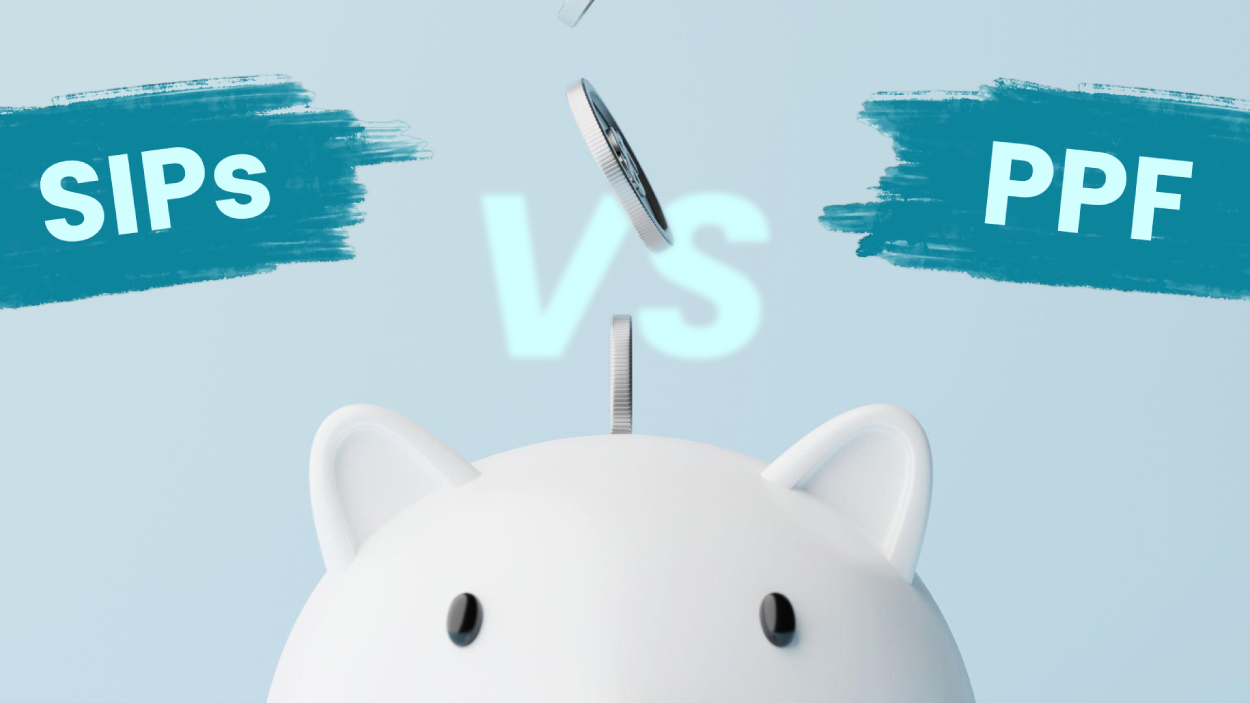Systematic Investment Plan vs Public Provident Fund
A Systematic Investment Plan (SIP) is a method of investing in mutual funds or peer-to-peer investments. A SIP is a subscription to a mutual fund or a peer-to-peer investment in which you pay a fixed sum on a monthly or other periodic basis.
A Public Provident Fund is a traditional savings system established by the Government of India in 1968 through the Public Provident Fund Act. The goal of this investment is to allow people to save money while earning a reasonable rate of return over a lengthy period of time. The government sets the interest rate each financial year. A PPF is a long-term investment plan with a 15-year period. The smallest investment in a PPF is Rs.500, and the maximum is Rs. 150,000/- per year.
SIP vs PPF: A Comparison
| Parameters | PPF | SIP |
| Objective | A PPF is more suitable for long-term investments with a duration of 15 years or more. | SIP investing is appropriate for all long-medium-short-term goals. They are good for money generation and goal achievement. |
| Interest Rates | It is presently 7.1%, although the government changes it every quarter. | If you invest in a market linked SIP, your investment may fluctuate depending on the performance of the stock market and the asset allocation strategy market. Typically, between 12 and 18% |
| Safety and Security | It is less dangerous because it is supported by the government. | The risk is determined by the sort of funds invested and the length of the investment. |
| Tenure | It has a fixed duration of 15 years that can be extended for an additional 5 years after it expires. | It normally does not have a definite term, though some may have a three-year lock-in period. |
| Investment Amount | Annual investments might range from Rs. 500 to Rs. 1.5 Lacs. | The minimum amount varies for every fund. SIPs can be started with as little as Rs.5,000 in Monexo Grow. |
| Investment Frequency | Investments must be made at least once and no more than 12 times per year for the duration of the contract. | It might be paid monthly, quarterly, or yearly, depending on the plan chosen. |
| Liquidity | PPF is not the most liquid investment option, because you can only withdraw after 7 years under specific conditions | SIPs, with the exception of those with a lock-in period, can be withdrawn at any time. However, there may be monetary penalties. |
| Tax Benefits | Section 80C exempts PPF from tax deductions. | Certain types of SIPs are taxable under certain conditions, whereas long-term equity gains are not. |
SIP VS PPF- Quick Summary
- SIP is a method of investing in mutual funds and peer-to-peer investments in monthly installments that provide market-linked returns.
- PPF is an investment scheme that offers stable earnings as well as tax advantages.
- The primary distinction between SIP and PPF is that SIP investment in ELSS provides tax savings just on the invested amount, whereas PPF investing provides tax savings on the invested amount, interest, and maturity.
- SIP has no maximum investment amount, however PPF has a maximum investment sum of Rs. 1,50,000 per year.
What Should You Choose?
While it is impossible to compare a market-linked product to a fixed income product, PPF investment is suggested for risk-averse individuals. Mutual funds are suitable for investors who are willing to assume a moderate risk in order to obtain larger returns. The modest risk can be reduced even further by investing in mutual funds through a long-term SIP plan.
Furthermore, due to a 15-year lock-in period, PPF investments rank low in terms of liquidity. Tax incentives are available under Section 80C for both PPF and ELSS mutual funds. The only advantage of PPF tax treatment is that, unlike mutual funds, PPF returns and maturity amounts are also tax-free.
However, historical data indicates that a 15-year mutual fund SIP in an average fund can provide 1.5 times the returns of a PPF, making it quite appealing in terms of returns and liquidity.
Still confused? Use Monexo’s SIP calculator to know how much you should invest to get your dream corpus.




